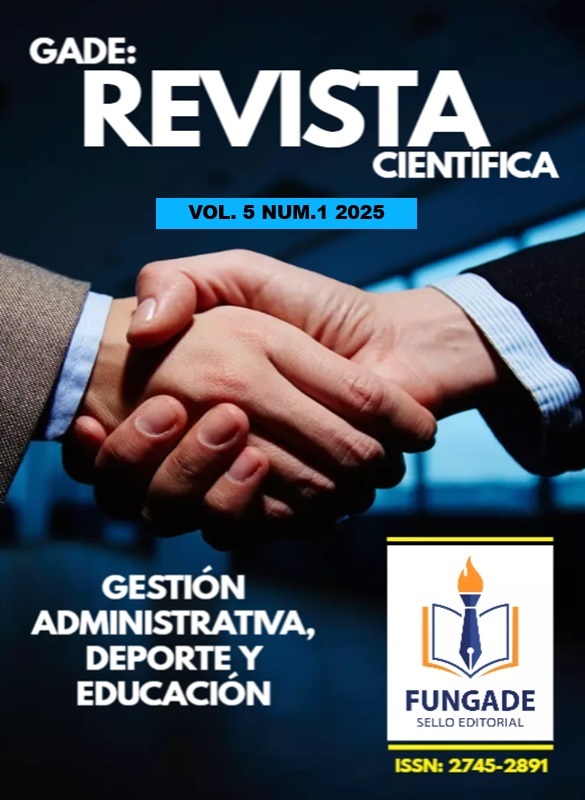Desarrollo motor en el adulto mayor: Envejecimiento Activo y Saludable
Resumen
El artículo tiene como objetivo analizar y discutir los factores que influyen en el Desarrollo Motor en adultos mayores, enfatizando el papel de la actividad física en la salud y la independencia a medida que las personas envejecen. Utilizando un enfoque cualitativo, revisa sistemáticamente la literatura existente para explorar los beneficios y desafíos relacionados con el desarrollo motor en adultos mayores, evidenciando cómo el ejercicio y las actividades motoras pueden mitigar los efectos del envejecimiento. Se identifican los factores que influyen en el desarrollo motor en adultos mayores, incluidos los aspectos biológicos, psicológicos y sociales. Las enfermedades crónicas, las limitaciones de movilidad y la disminución de la masa muscular y la flexibilidad relacionada con la edad son barreras físicas para mantener la salud motora. Los factores psicosociales, como la motivación, la salud mental y los sistemas de apoyo social, también desempeñan un papel fundamental en la capacidad de una persona para participar y mantener la actividad física.
Descargas
Citas
Academic Journals. (2023). Active and healthy aging: Physical and cognitive benefits of exercise in the elderly. Quarterly Journal of Medicine. Retrieved from https://academic.oup.com
Bandura, A. (1997). Self-efficacy: The exercise of control. W.H. Freeman.
European Review of Aging and Physical Activity. (2023). Effects of motor practice on cognitive disorders in older adults. European Review of Aging and Physical Activity. Retrieved from https://eurapa.biomedcentral.com
Fragala, M. S., et al. (2019). Resistance training for older adults: Position statement from the National Strength and Conditioning Association. Journal of Strength and Conditioning Research, 33(8), 2019–2052. Retrieved from [https://journals.lww.com](https://journals.lww.com)
Fried, L. P., et al. (2001). Frailty in older adults: Evidence for a phenotype. Journals of Gerontology: Series A, Biological Sciences and Medical Sciences, 56(3), M146–M156. Retrieved from [https://academic.oup.com](https://academic.oup.com)
Kattenstroth, J. C., et al. (2013). Effects of dance on physical and cognitive function in older adults. Aging Clinical and Experimental Research, 25(5), 445–456. Retrieved from [https://link.springer.com](https://link.springer.com)
Kirkwood, T. B., et al. (2014). Understanding the cultural and societal determinants of physical activity in older adults. Journal of Aging Studies, 28(1), 67–74. Retrieved from [https://www.sciencedirect.com](https://www.sciencedirect.com)
Li, F., et al. (2021). Tai Chi as an intervention to reduce falls in older adults: Systematic review and meta-analysis. Journal of Aging and Health, 33(3-4), 177–190. Retrieved from [https://journals.sagepub.com](https://journals.sagepub.com)
Lopez-Otin, C., Blasco, M. A., Partridge, L., Serrano, M., & Kroemer, G. (2023). Physical activity as a determinant of successful aging. Cell, 153(6), 1194-1217. Retrieved from [https://www.cell.com](https://www.cell.com)
Marmeleira, J. F., Raimundo, A., & del Pozo-Cruz, J. (2023). The benefits of physical activity and exercise in motor and cognitive functions in older adults. International Journal of Environmental Research and Public Health. Retrieved from https://www.mdpi.com
Martinson, M. L., et al. (2022). Combined physical and psychological interventions for older adults: A systematic review. Journal of Gerontology: Medical Sciences. Retrieved from [https://academic.oup.com](https://academic.oup.com)
Molina, K. I., et al. (2021). The effectiveness of virtual reality-based balance training in older adults: A systematic review and meta-analysis. Journal of NeuroEngineering and Rehabilitation, 18(1), 34. Retrieved from [https://jneuroengrehab.biomedcentral.com](https://jneuroengrehab.biomedcentral.com)
Montero-Odasso, M., et al. (2019). Dual-task training and mobility in older adults: The interplay between cognitive and motor domains. Journal of the American Geriatrics Society, 67(2), 229–238. Retrieved from [https://agsjournals.onlinelibrary.wiley.com](https://agsjournals.onlinelibrary.wiley.com)
Nikolich-Zugich, J. (2023). Aging and the immune system. Nature Reviews Immunology, 18(5), 315-328. Retrieved from [https://www.nature.com](https://www.nature.com)
North, B. J., & Sinclair, D. A. (2023). Aging and physical resilience: Interplay between motor development and chronic disease prevention. Circulation Research. Retrieved from [https://www.ahajournals.org](https://www.ahajournals.org)
Phillips, S. M., et al. (2023). Social support and its role in physical activity among older adults. Social Science & Medicine, 114, 11–20. Retrieved from [https://www.sciencedirect.com](https://www.sciencedirect.com)
Schaefer, S., & Schumacher, V. (2020). The interplay between cognitive and motor function in healthy older adults: The role of dual-task training. Frontiers in Psychology, 11, 882. Retrieved from [https://www.frontiersin.org](https://www.frontiersin.org)
Sherrington, C., et al. (2019). Exercise for preventing falls in older adults: An updated systematic review and meta-analysis. British Journal of Sports Medicine, 54(15), 885–891. Retrieved from [https://bjsm.bmj.com](https://bjsm.bmj.com)
Shumway-Cook, A., & Woollacott, M. H. (2017). Motor control: Translating research into clinical practice. Lippincott Williams & Wilkins. Retrieved from [https://www.lww.com](https://www.lww.com)
Studenski, S., et al. (2018). Gait speed and survival in older adults. JAMA, 305(1), 50–58. Retrieved from [https://jamanetwork.com](https://jamanetwork.com)
Walston, J. D., et al. (2023). Sarcopenia and muscle function in aging. Journal of Gerontology: Medical Sciences, 72(1), 123-131. Retrieved from [https://academic.oup.com](https://academic.oup.com)
Derechos de autor 2025 Silvio Rafael Villera Coronado

Esta obra está bajo licencia internacional Creative Commons Reconocimiento-NoComercial-SinObrasDerivadas 4.0.





 GADE: Revista Científica, eISSN: 2745-2891, Tel: (+57) 3143134045, E-mail: gaderevistacientifica@gmail.com
GADE: Revista Científica, eISSN: 2745-2891, Tel: (+57) 3143134045, E-mail: gaderevistacientifica@gmail.com
